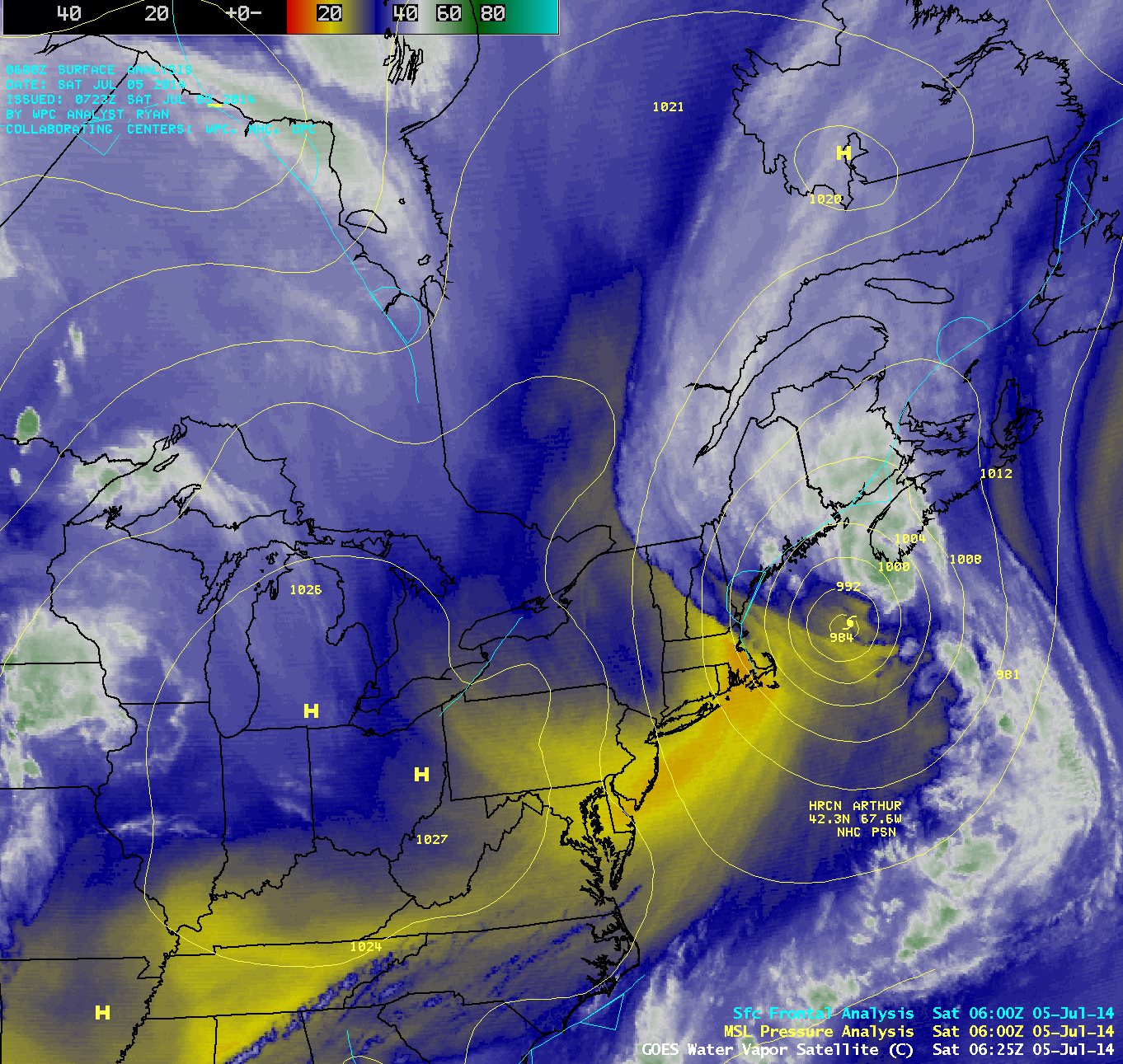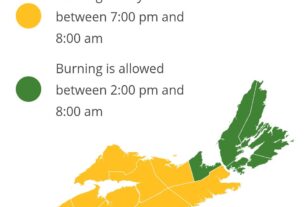**** Info via Environment Canada
Sting jets
On Saturday, July 5, 2014, Hurricane Arthur transformed into a potent post-tropical storm over the Maritimes. The storm caused significant tree damage and widespread flooding by merging with a cold front. A very small area of extremely high winds, referred to as a “sting jet”, was formed to the left of the storm track. Areas around Greenwood, Nova Scotia and the Annapolis Valley even saw wind gusts of 138 km/h.

GOES-13 Satellite loop of Hurricane Arthur sweeping through the Maritimes. Credit: University of Wisconsin, Space Science and Engineering Centre.
So how does a sting jet form?
A sting jet is a small area of very intense winds within a storm that is hard to predict. Not all, except certain large and intense storms, have this feature. It typically forms where the cold conveyor belt (a flow of cold air from the north) interacts with the dry intrusion (a region of dry air descending from higher altitudes).
Conveyor belts associated with strong storm systems. Strong wind flows, called conveyor belts (1), form ahead of warm and cold fronts. The cold conveyor belt (2) brings cold, moist air towards the centre of the storm and cool, dry air flows into the backside of the storm forming a dry intrusion (3). Cooled air descends rapidly (dark blue arrow 5) reaching the surface as a powerful and damaging sting jet. Credit: NWS and the COMET program.
Sting jets can pose a significant risk to areas affected by a post-tropical cyclone. The strong winds they generate can cause localized wind gusts, which can be particularly destructive, as we have seen with Hurricane Arthur. Luckily, sting jets are rare!




